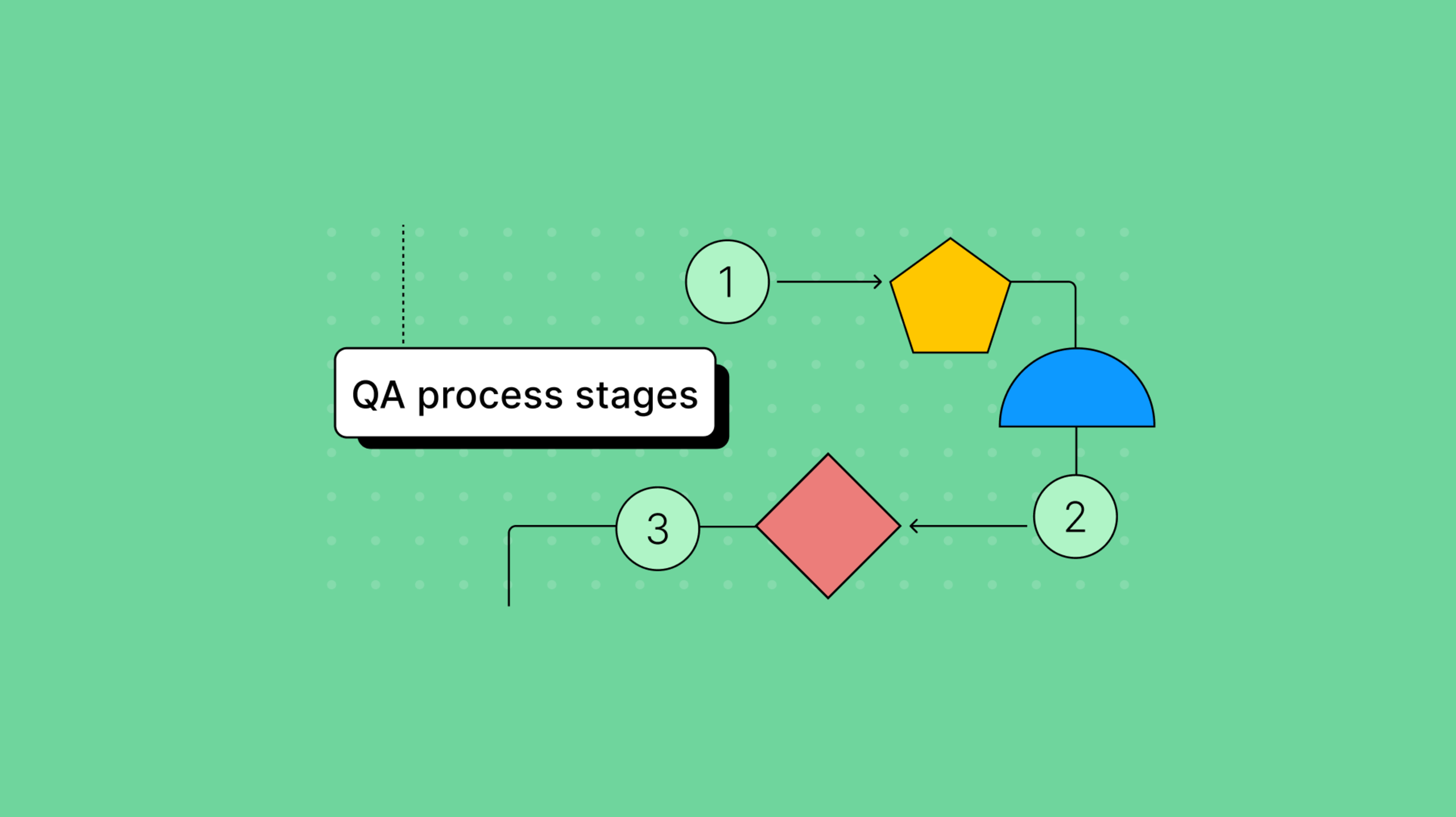Quality assurance (QA) is essential in the product development cycle, but for those setting it up for the first time, it can quickly become a maze of unknowns and added complexities. Without a well-planned and thorough QA process, it often becomes an afterthought, leading to bug-ridden releases, customer dissatisfaction, and wasted resources.
To launch with confidence and deliver a product that keeps customers coming back, QA needs to be baked into your development schedule from the start. Every stakeholder involved—developers, project managers, and even sales and marketing—must understand its importance.
Whether you’re building a QA process from scratch or looking to make improvements, these five steps will help you get started.
What is the QA process?
The QA (Quality Assurance) process is a structured set of procedures and practices inside the Software Development Life Cycle, designed to ensure that a product or service meets both quality standards and customer expectations. It involves systematic steps to identify and fix defects, errors, or issues that could arise during the development lifecycle.
The goal is clear: detect and resolve issues before the product reaches the market or end-users.
QA planning considerations
Creating a QA process can be challenging because there’s no one-size-fits-all solution. Before you start, consider these factors:
- Your organization’s testing policies (you may need to create them)
- Business goals
- Development practices and standards
- The technology stack and tools your team uses
- Project complexity
- Your end users’ needs
- Release procedures and team structure
- Available resources
Understanding these aspects is critical for shaping or refining your QA process.
5 steps approach to testing and improving QA
Before diving into a new project, clarify how the QA process will fit into your product lifecycle. By setting expectations and best practices upfront, you’ll minimize defects and reduce customer complaints when your product launches. Here are five steps to approach the QA process.
1. Clarify requirements
Many issues that arise close to product launch are often the result of unclear requirements or incorrect assumptions. Getting stakeholders to review and sign off on requirements early in the process is essential.
Your team should have a development process that includes QA for setting and sharing clear acceptance criteria. Developers need to understand what “ready to test” looks like, with no ambiguity.
2. Ensure quality code production
The QA process can’t catch every bug before launch. It’s more about mitigating the risk for users before an application goes to production. If developers follow good coding practices and proper testing protocols, there will be fewer bugs to begin with.
- Have all new code and changes reviewed by peers before moving to the next development phase.
- Incorporate developer testing into the coding process—this catches mistakes earlier.
- Use QA process checklists to help developers ensure all necessary tests and reviews are completed before marking tasks as finished.
3. Set up the right environments for QA
The right test environment is key to successful software testing. Without it, you risk extra costs and wasted time.
Test environments should mirror your production setup as closely as possible. This includes identical server and client configurations to avoid inaccurate testing results. Having both testing and staging environments is ideal—one to test components and the other to ensure everything works together in the real world.
A well-designed, up-to-date test environment provides accurate feedback and helps isolate issues for easier debugging.
4. Conduct regular test coverage and test case reviews
QA is a proactive approach to prevent defects, while Quality Control focuses on detecting issues. To maintain a robust QA process, you need to do both.
Over time, repeatedly running the same test cases can lead to diminished effectiveness—what’s known as the “pesticide paradox.” To avoid this, review and update test cases regularly. Identify gaps, add new cases, and remove outdated ones.
Though Agile teams often have limited time for these activities, it’s worth scheduling time for the QA process to ensure continued product performance.
5. Define QA for your team
Your team should understand the QA process and be comfortable following it. Today dedicated QA departments are less common, so cross-functional teams need to take QA seriously throughout the development process.
Clear guidelines and expectations help ensure QA is done correctly. Make sure to emphasize the importance of QA to reduce engineering costs, improve software quality, and boost customer satisfaction—all while freeing up time to work on new projects.
Tools for effective QA testing
At Tiny, our commitment to quality is reflected in the close collaboration between our QA, engineering, and support teams. This proactive approach keeps bugs to a minimum and ensures our WYSIWYG HTML editor remains trusted by millions of developers globally. It’s used in over 100 million products worldwide.
Check out 9 products you can build with TinyMCE.
As the leader of Tiny’s QA team, I take immense pride in ensuring our WYSIWYG editor exceeds expectations. A product’s success depends on delivering a seamless user experience, and that’s what we aim for with TinyMCE. It’s not just about creating a great product—it’s about helping other applications provide the same level of excellence through TinyMCE.
Being part of this process, applying my passion for QA, and contributing to a great user experience for millions of people worldwide is incredibly fulfilling.
